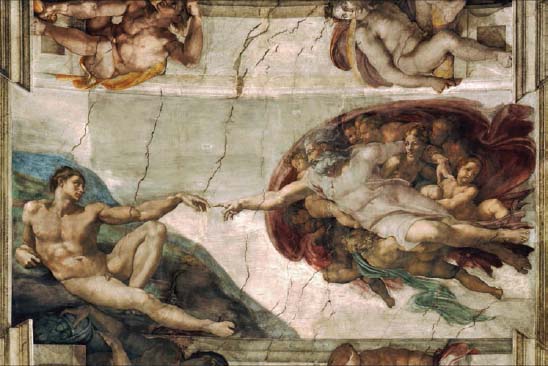The Early Modern World, C. 1300–1600High Renaissance in Italy |
What is the Sistine Chapel? |
In a letter to a friend in 1508, Michelangelo admitted that he disliked painting and really didn’t want to paint the ceiling of the Sistine Chapel, now one of the most famous ceilings in the world. It is located in the Vatican, the official residence of the Pope in Rome. The Sistine Chapel, named after Pope Sixtus IV, was designed to be the same size as the Temple of Solomon and was built between 1475 and 1481. The interior of the chapel is covered in frescoes depicting Christian subjects and themes. Pope Julius II personally asked for Michelangelo to paint the ceiling frescoes, and after he reluctantly accepted, rumor also has it that the artist shut himself up in the chapel for four years, refusing to let anyone else in. That part of the story is very unlikely; Michelangelo would have needed the support of his workshop apprentices to complete the project in four years.
Michelangelo did not paint the walls of the Sistine Chapel. That work was completed by other artists such as Sandro Botticelli and Domenico Ghirlandaio, Michelangelo’s former master. The wall frescoes visually narrate scenes from the Bible, including the story of Moses and the life of Christ. On the ceiling, Michelangelo depicted numerous Old Testament scenes, including David and Goliath, The Creation of Adam, the Fall from Paradise, and Judith and Holofernes. With hundreds of figures in multiple poses, various different scenes, plants, nature, and illu-sionistic architectural elements, it’s a wonder the Sistine Chapel isn’t a sensory overload. But Michelangelo was able to infuse the entire 45 x 128-foot space with a sense of grace, calm, and awe.

The great master Michelangelo was a sculptor, architect, and painter. His ceiling frescos in the Sistine Chapel are among the most famous paintings in the world. Michelangelo’s skills in naturalism are clear in the famous panel The Creation of Adam in which the barely touching fingers of God and Adam heighten the drama of the scene.
